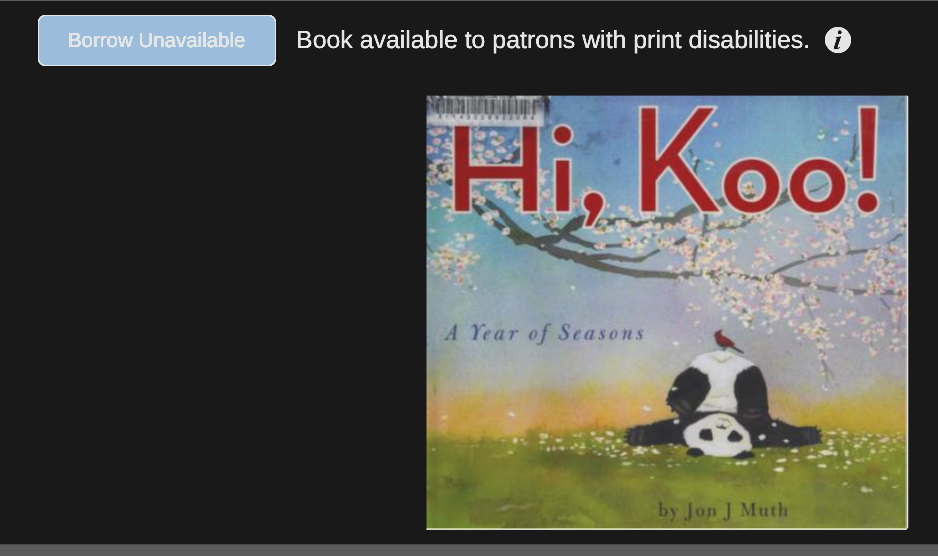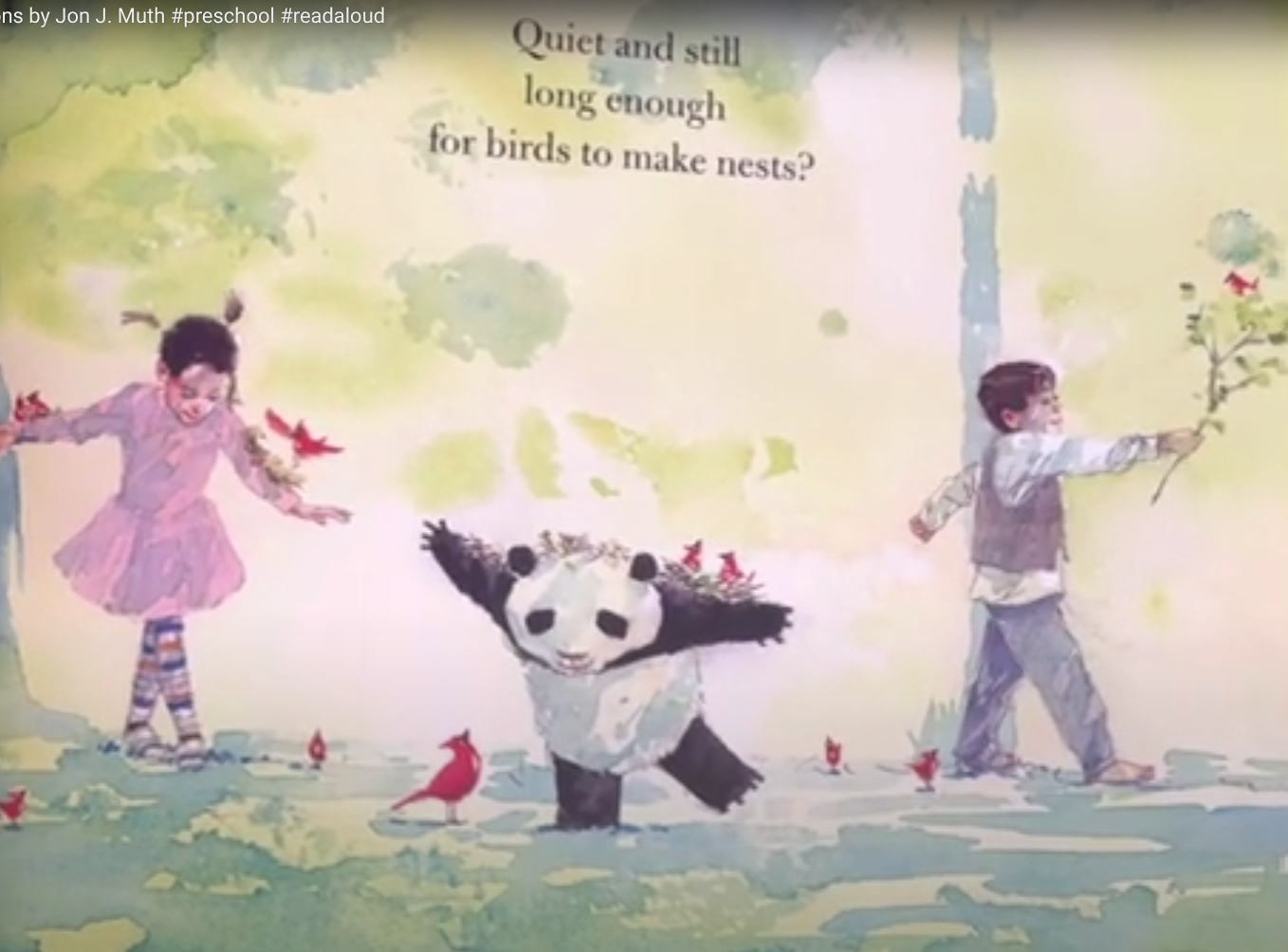Today I want to write about a children's haiku book by one of my favorite children's book authors and illustrations, Jon Muth: Hi, Koo! Here's a video with the author:
You might know Muth from his Zen books for children: Zen Happiness, Zen Ghosts, Zen Shorts, Zen Ties, and Zen Socks. (I have them all!) This haiku book features the same lovely panda Koo from the Zen books, and you can also read about Koo in Muth's Stillwater and Koo Save the World. (And yes, Stillwater is a Zen name: still water reflecting the moon; you can listen to Muth talk about that in the video.)
I am sad to say that Muth's books have been removed from borrowing at the Internet Archive; about a half million books owned and scanned by the Archive are no longer available for borrowing because of the publishers' lawsuit (I will never understand why publishers don't see libraries as partners and instead see them as the enemy... more about the lawsuit here; I was a witness for the Archive in that lawsuit and am still broken-hearted about it).

So, alas, you cannot borrow this and other beautiful books by Muth from the Archive, but there are abundant used copies at bookfinder.com. (Thank goodness the publishers have not put a stop to the used book trade, although you know the Big 5 would like to put an end to that too if they could!)
You can also listen to a read-loud at YouTube:
The teacher who reads the book unfortunately skips over the very useful preface page that Muth provides about his approach to haiku, and why he does not use the 5-7-5 syllable approach. I think that would be useful to share with young readers, especially since they might have learned that 5-7-5 haiku style in school (I did!).
The poems follow the seasons, which is a very haiku thing to do, and the illustrations and poems resonate in a really lovely way, which is also a very haiku thing to do.
A not-traditional haiku thing is that Muth has woven the alphabet throughout the poems, so that there is a word that starts with A in the first poem, a word that starts with B in the second poem, etc. He explains this is in the preface (another good reason to read the preface!), and then those words are capitalized in the poems. But sometimes those words happen to be the first word of the poem, which makes things a bit confusing, because some poems have the first word capitalized, and some do not. So, just speaking for myself, I found this capitalization strategy distracting; if I had been the book designer, I would have suggested not changing the typography of the poems but instead putting the alphabet word down in the bottom of the page along the page gutter, so that you could see the alphabet words next to each other on each 2-page spread. But that's a small thing, just my own obsessing-about-capitalization in haiku, ha ha (as I do obsess about that; I find it a fascinating question – what to do with those capital letters in minimalist poetry).
One thing I've been wanting to do is to start writing haiku for children (I'd like to CC-license some children's haiku for teachers to reuse), and Muth's book is an absolutely perfect example of how it is possible to write beautiful and thought-provoking haiku poetry for young readers. So, I'll be returning to Muth's book for inspiration and guidance as to how best to do that. Here's one of my favorites that I snagged in a screenshot from the video:
quiet and still
long enough
for birds to make nests?

So, if you are looking for a book to give to some young readers, or to give to yourself, this is a great choice, as are all of Muth's Zen books too. We can all use more Koo.